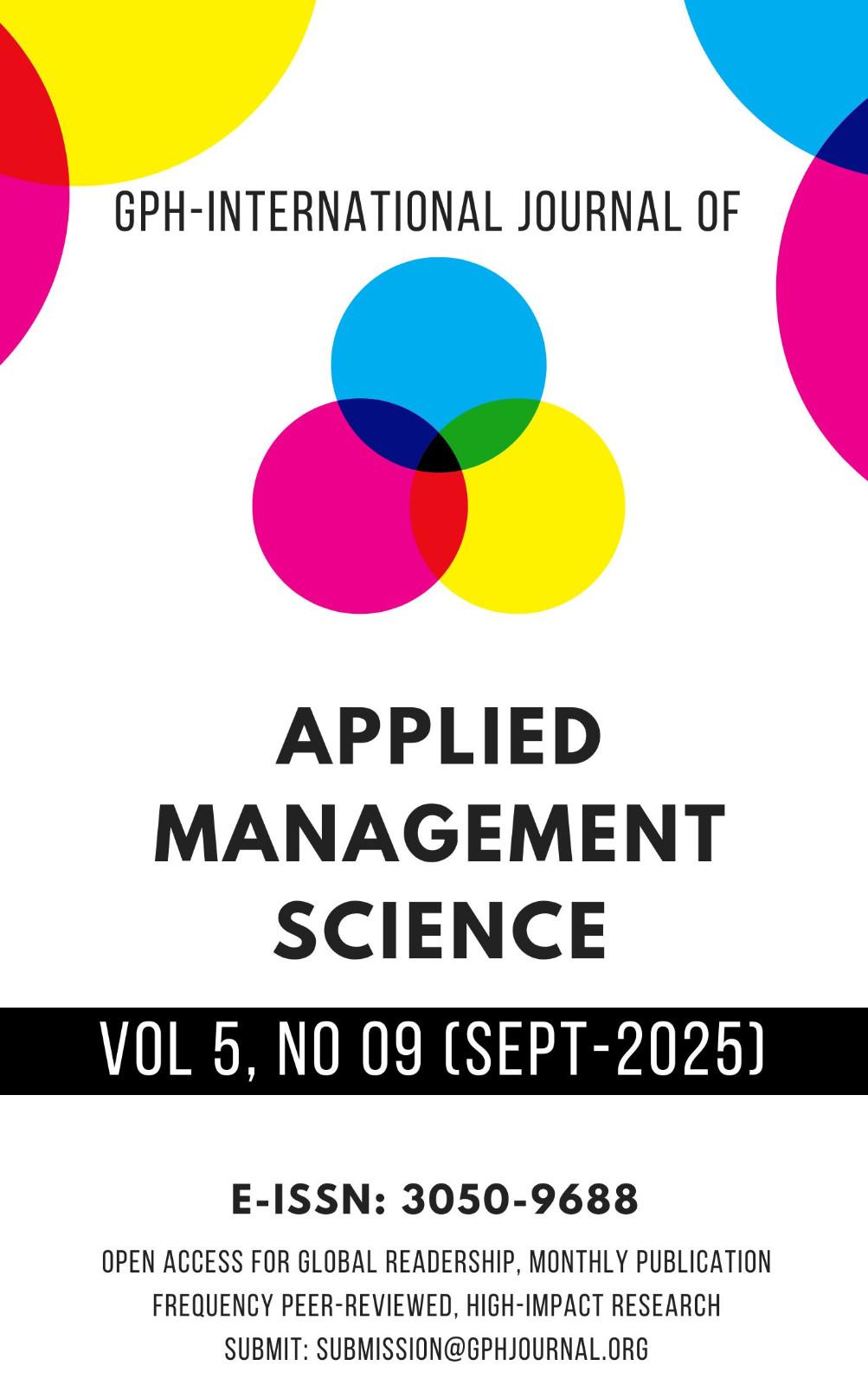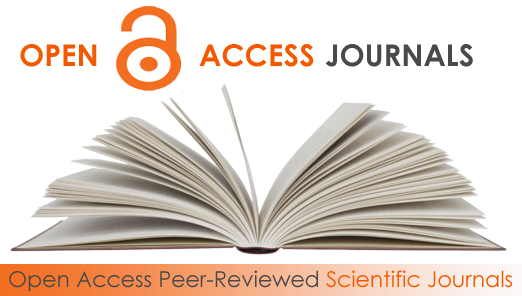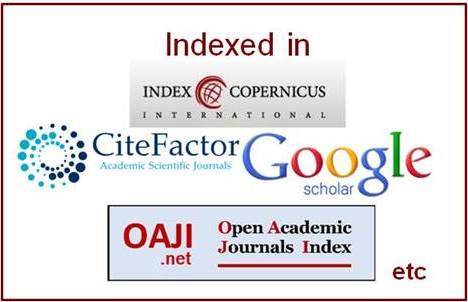EMERGING TRENDS IN ARTIFICIAL INTELLIGENCE (AI) -DRIVEN OPERATIONS:
A BIBLIOMETRIC ANALYSIS
Abstract
Background
Artificial Intelligence (AI) has become a transformative force in operational domains, reshaping processes in manufacturing, logistics, scheduling, and cloud-based systems. The rapid proliferation of research output, particularly within the 2025–2026 period, underscores the need for a systematic bibliometric assessment to elucidate emerging thematic trajectories, intellectual structures, and influential contributors in AI-driven operations.
Methods
A quantitative bibliometric design was employed using the Biblioshiny platform, underpinned by the Bibliometrix R package. Bibliographic data were sourced from Scopus and restricted to publications dated 2025–2026 that explicitly addressed AI applications in operational contexts. The analysis integrated performance indicators—such as publication productivity and citation impact with science mapping techniques, including co-authorship analysis, keyword co-occurrence, thematic clustering, and network centrality metrics.
Results
Findings reveal a pronounced temporal concentration of publications in 2025, indicative of a hyper-accelerated research front. China emerged as the predominant contributor, with South China University of Technology and other leading institutions demonstrating the highest output. Thematic mapping identified three major clusters reinforcement learning, scheduling algorithms, and smart manufacturing and a smaller emergent cluster on fabrication. Strong inter-thematic linkages highlight the convergence of AI methodologies with operational optimization and Industry 4.0 applications. Owing to the recency of the dataset, traditional citation counts were minimal; thus, PageRank and network-based metrics provided more meaningful indicators of early influence. Several recent publications demonstrated notable structural impact within the emerging knowledge network.
Conclusion
AI-driven operations research is characterized by rapid expansion, thematic convergence, and significant regional concentration, particularly within Chinese institutions. Reinforcement learning, scheduling algorithms, and smart manufacturing constitute the intellectual core of the field, reinforced by advances in cloud and edge computing. In the context of an emergent research landscape, network-based impact measures are more appropriate than conventional citation metrics. The findings indicate a swift transition from theoretical exploration to applied innovation, necessitating continued monitoring, interdisciplinary collaboration, and strategic policy and industry engagement.
Downloads
References
Aria, M., & Cuccurullo, C. (2017). bibliometrix: An R-tool for comprehensive science mapping analysis. Journal of Informetrics, 11(4), 959–975. https://doi.org/10.1016/j.joi.2017.08.007
Börner, K. (2010). Atlas of science: Visualizing what we know. MIT Press.
Dave, D. M. (2023). Neural manufacturing: The future of intelligent production. Journal of Emerging Technologies and Innovative Research, 14(6), 102–110.
De Sousa Jabbour, A. B. L., Jabbour, C. J. C., Foropon, C., & Filho, M. G. (2018). When titans meet—Can Industry 4.0 revolutionise the environmentally-sustainable manufacturing wave? Journal of Cleaner Production, 194, 735–748. https://doi.org/10.1016/j.jclepro.2018.05.223
Dhillon, S. K., Ibrahim, R., & Selamat, A. (2013). Strategy identification for sustainable key performance indicators delivery process for scholarly publication and citation. Council for Innovative Research Journal, 13(5), 77–85.
Donthu, N., Kumar, S., Mukherjee, D., Pandey, N., & Lim, W. M. (2021). How to conduct a bibliometric analysis: An overview and guidelines. Journal of Business Research, 133, 285–296. https://doi.org/10.1016/j.jbusres.2021.04.070
Ekundayo, F. (2024). Leveraging AI-driven decision intelligence for complex systems engineering. International Journal of Research Publication and Reviews, 11(2), 54–63.
Floridi, L., Cowls, J., Beltrametti, M., Chatila, R., Chazerand, P., Dignum, V., … Vayena, E. (2018). AI4People: An ethical framework for a good AI society. Minds and Machines, 28(4), 689–707. https://doi.org/10.1007/s11023-018-9482-5
Gao, R., Wang, L., & Helu, M. (2022). Cloud-enabled prognosis for manufacturing systems: A deep reinforcement learning approach. Journal of Manufacturing Systems, 62, 714–723. https://doi.org/10.1016/j.jmsy.2021.12.007
He, K., Zhang, X., Ren, S., & Sun, J. (2016). Deep residual learning for image recognition. In Proceedings of the IEEE/CVF Conference on Computer Vision and Pattern Recognition (pp. 770–778).
Kumar, B. (2022). Challenges and solutions for integrating AI with multi-cloud architectures. International Journal of Multidisciplinary Innovation and Research Methodology, 7(3), 56–65.
Lee, J., Bagheri, B., & Kao, H.-A. (2015). A cyber-physical systems architecture for industry 4.0-based manufacturing systems. Manufacturing Letters, 3, 18–23. https://doi.org/10.1016/j.mfglet.2014.12.001
Liu, Y., Song, Y., & Cai, S. (2020). China’s growing leadership in artificial intelligence research: Patterns and implications. Technological Forecasting and Social Change, 159, 120180. https://doi.org/10.1016/j.techfore.2020.120180
Mnih, V., Kavukcuoglu, K., Silver, D., Rusu, A. A., Veness, J., Bellemare, M. G., … Hassabis, D. (2015). Human-level control through deep reinforcement learning. Nature, 518(7540), 529–533. https://doi.org/10.1038/nature14236
N, P., Mishra, S., Jain, R., Prajapati, D., Solanki, A., Suthar, R., … Patel, H. (2024). Transparency in AI decision making: A survey of explainable AI methods and applications. Advances in Robotic Technology, 10(2), 45–59.
Pan, S., Wang, Z., & Xu, C. (2021). Deep reinforcement learning for flexible job-shop scheduling. Computers & Industrial Engineering, 153, 107098. https://doi.org/10.1016/j.cie.2020.107098
Porter, M. E., & Heppelmann, J. E. (2014). How smart, connected products are transforming competition. Harvard Business Review, 92(11), 64–88.
Samek, W., Wiegand, T., & Müller, K.-R. (2017). Explainable artificial intelligence: Understanding, visualizing and interpreting deep learning models. arXiv preprint. https://arxiv.org/abs/1708.08296
Sanico, M. F. (2025). Mapping the Intellectual and Thematic Structure of Smart Citiesand Sustainable Development: A Scientometric Analysis (2015 – 2018). GPH-International Journal ofApplied Management Science, 5(8), 01-13. https://doi.org/10.5281/zenodo.17152578
(PDF) Mapping the Intellectual and Thematic Structure of Smart Cities and Sustainable Development: A Scientometric Analysis (2015 -2018). Available from: https://www.researchgate.net/publication/395708788_Mapping_the_Intellectual_and_Thematic_Structure_of_Smart_Cities_and_Sustainable_Development_A_Scientometric_Analysis_2015_-2018
Shi, W., Cao, J., Zhang, Q., Li, Y., & Xu, L. (2016). Edge computing: Vision and challenges. IEEE Internet of Things Journal, 3(5), 637–646. https://doi.org/10.1109/JIOT.2016.2579198
Skute, I., Zalewska-Kurek, K., Hatak, I., & de Weerd-Nederhof, P. (2017). Mapping the field: A bibliometric analysis of the literature on university–industry collaborations. Journal of Technology Transfer, 42(3), 530–553. https://doi.org/10.1007/s10961-016-9496-1
Soori, M., Arezoo, B., & Dastres, R. (2023). Artificial intelligence, machine learning and deep learning in advanced robotics: A review. Cognitive Robotics, 3(1), 54–70. https://doi.org/10.1016/j.cogr.2023.04.001
Sundaramurthy, S. K., Ravichandran, N., Inaganti, A. C., & Muppalaneni, R. (2022). AI-powered operational resilience: Building secure, scalable, and intelligent enterprises. Artificial Intelligence and Machine Learning Review, 6(2), 112–128.
Sutton, R. S., & Barto, A. G. (2018). Reinforcement learning: An introduction (2nd ed.). MIT Press.
van Eck, N. J., & Waltman, L. (2014). Visualizing bibliometric networks. In Y. Ding, R. Rousseau, & D. Wolfram (Eds.), Measuring scholarly impact (pp. 285–320). Springer. https://doi.org/10.1007/978-3-319-10377-8_13
Venkatesh, V., Thong, J. Y. L., & Xu, X. (2020). Unified theory of acceptance and use of technology: A review and extension. MIS Quarterly, 45(1), 1–30. https://doi.org/10.25300/MISQ/2020/13842
Wang, J., Li, X., & Zhang, H. (2022). Resource allocation in edge–cloud environments: A reinforcement learning approach. IEEE Transactions on Cloud Computing, 10(2), 846–858. https://doi.org/10.1109/TCC.2019.2895718
Waltman, L. (2016). A review of the literature on citation impact indicators. Journal of Informetrics, 10(2), 365–391. https://doi.org/10.1016/j.joi.2016.02.007
Xu, L. D., Xu, E. L., & Li, L. (2018). Industry 4.0: State of the art and future trends. International Journal of Production Research, 56(8), 2941–2962. https://doi.org/10.1080/00207543.2018.1444806
Yan, E., & Ding, Y. (2009). Applying centrality measures to impact analysis: A co-authorship network analysis. Journal of the American Society for Information Science and Technology, 60(10), 2107–2118. https://doi.org/10.1002/asi.21128
Zhang, Y., Ren, S., Liu, Y., & Si, S. (2019). A big data analytics architecture for cleaner manufacturing and maintenance processes of complex products. Journal of Cleaner Production, 228, 976–988. https://doi.org/10.1016/j.jclepro.2019.04.225
Zucolotto, P. V., Yamane, L. H., & Siman, R. R. (2022). Smart bibliometrics: An integrated method of science mapping and bibliometric analysis. Scientometrics, 127(1), 321–340. https://doi.org/10.1007/s11192-021-04173-7
Author(s) and co-author(s) jointly and severally represent and warrant that the Article is original with the author(s) and does not infringe any copyright or violate any other right of any third parties, and that the Article has not been published elsewhere. Author(s) agree to the terms that the GPH Journal will have the full right to remove the published article on any misconduct found in the published article.









 Street. Viaductweg 186, City. Bruchem, State. Gelderland, Zip code 5314LK, Netherlands
Street. Viaductweg 186, City. Bruchem, State. Gelderland, Zip code 5314LK, Netherlands

